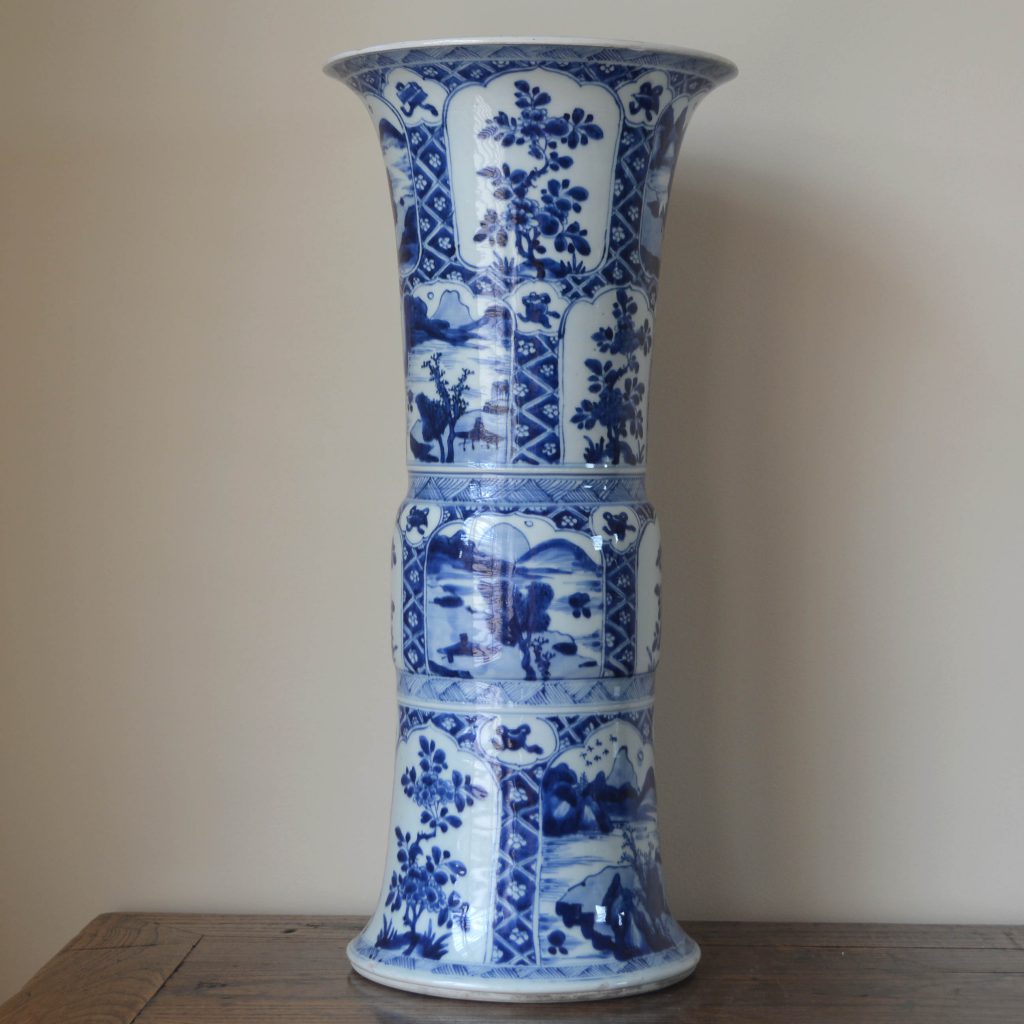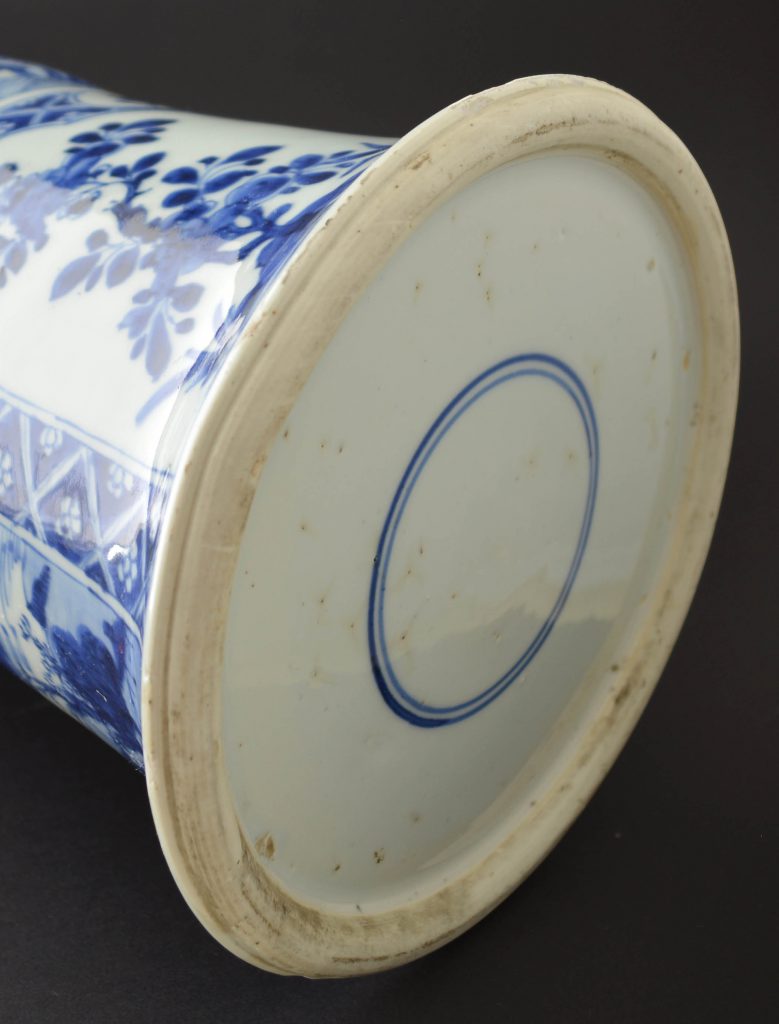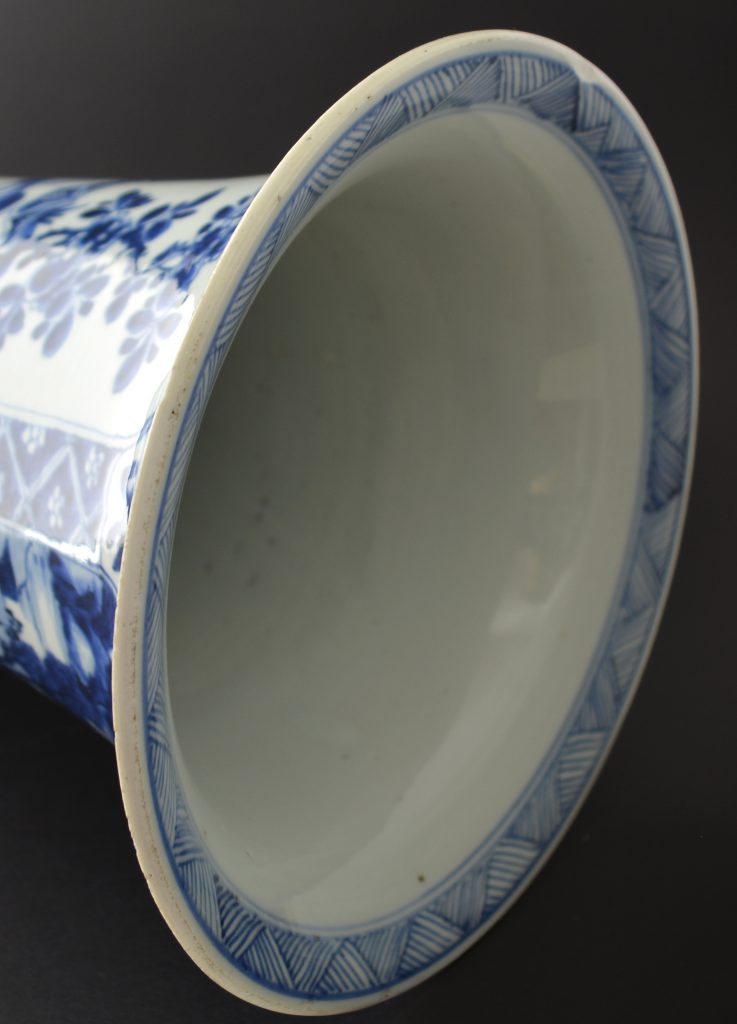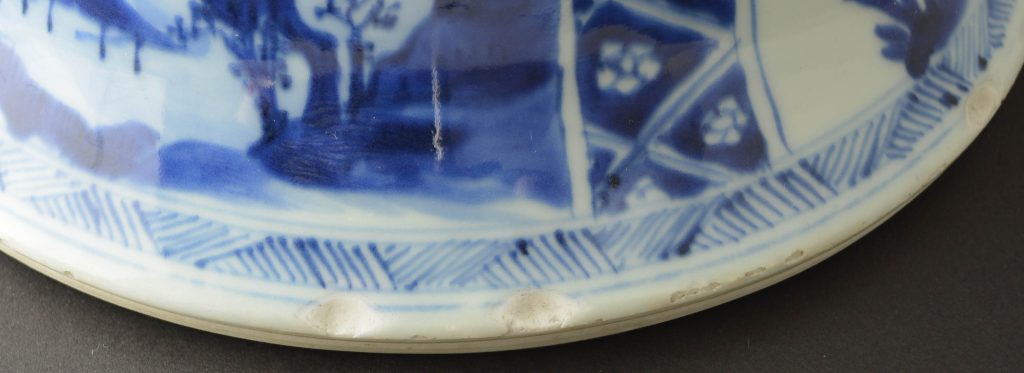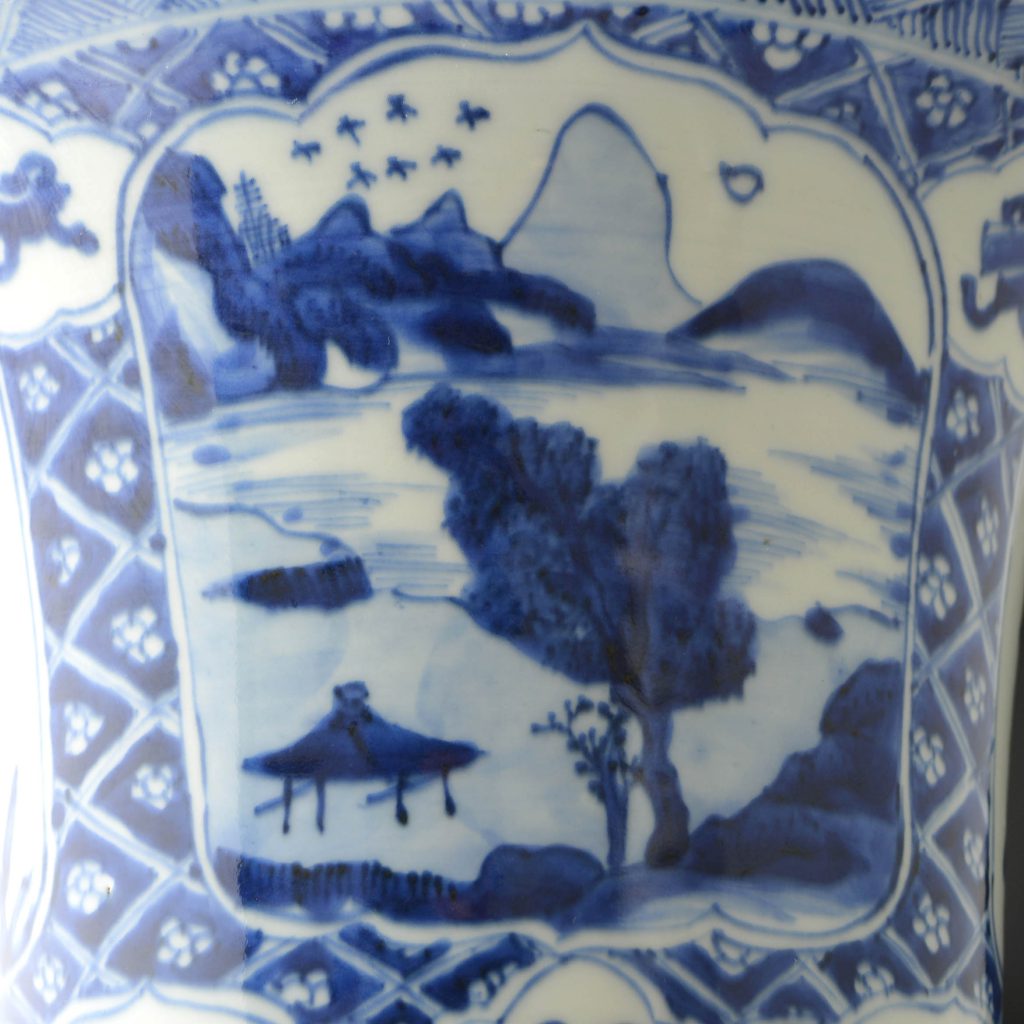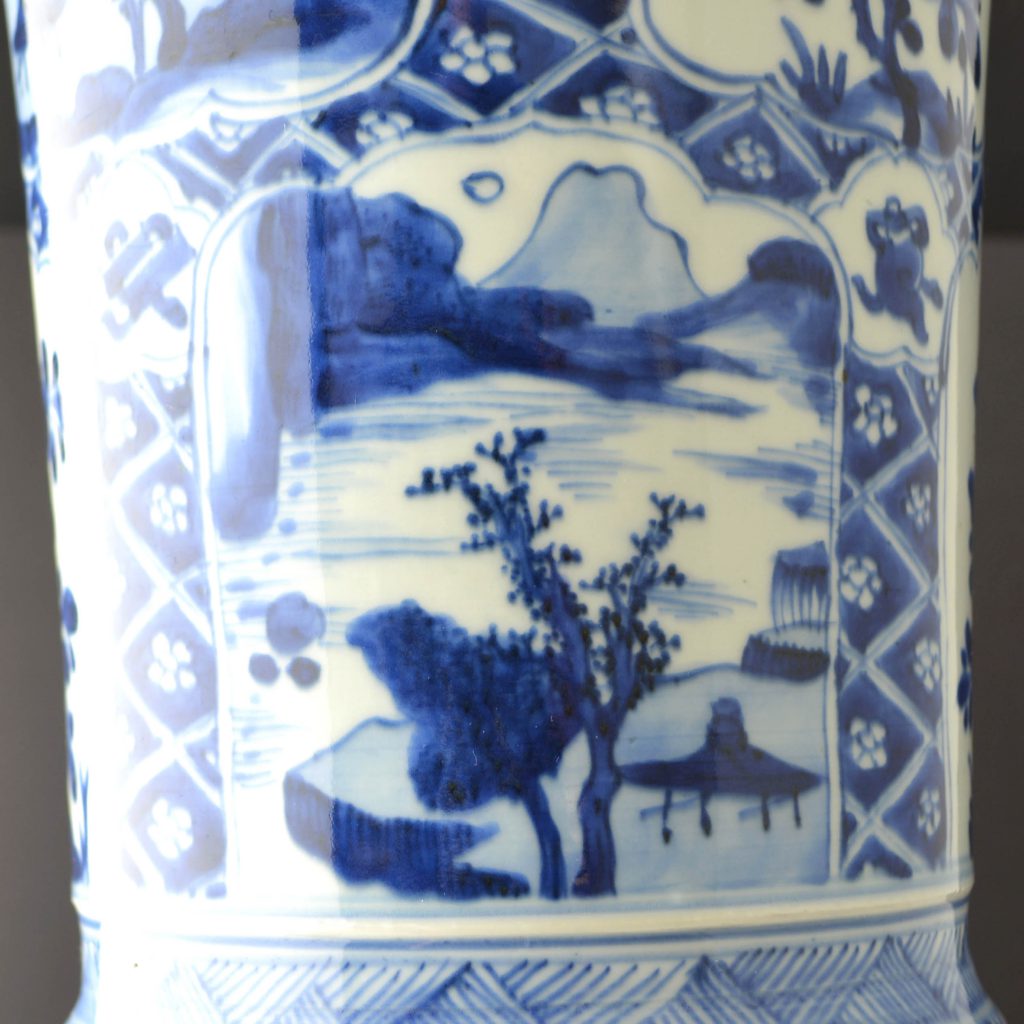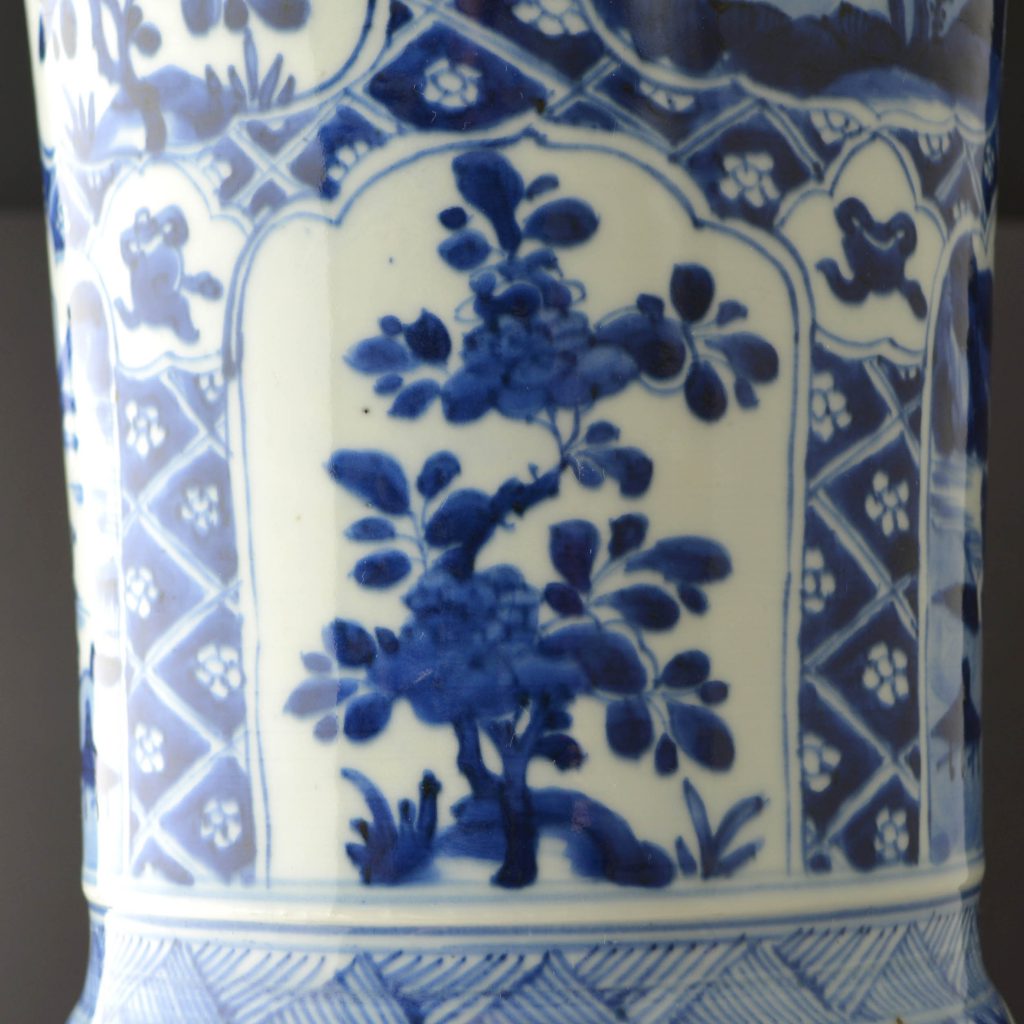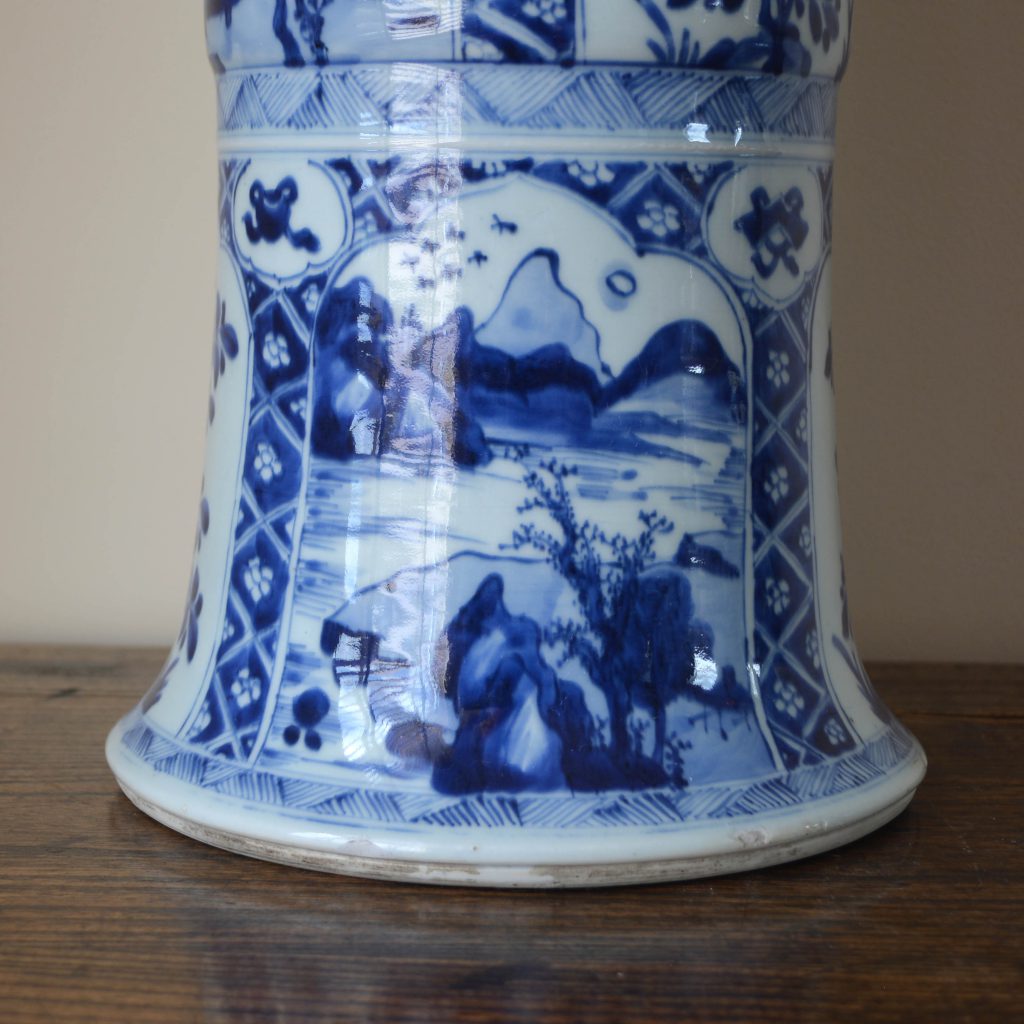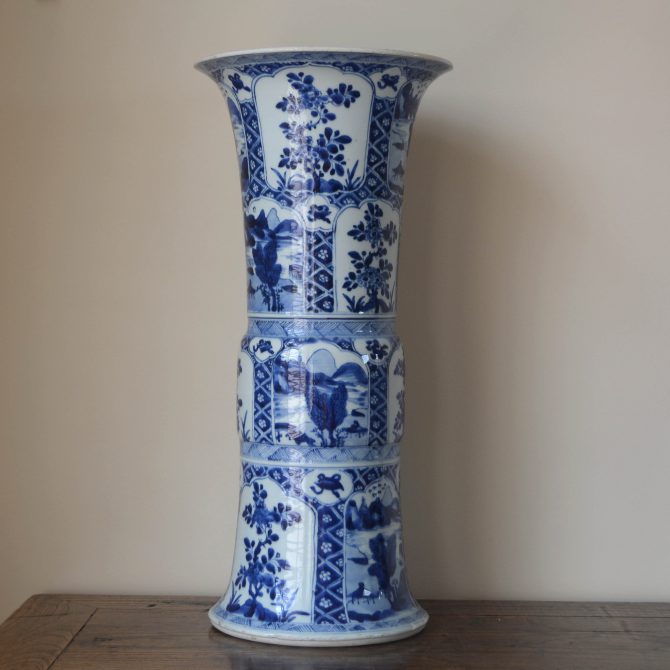
A Massive Kangxi Blue and White Porcelain ‘Gu’ Shaped Vase c.1690 – 1710.
A substantial Kangxi Blue and White porcelain Gu shaped beaker vase c.1690-1710. The cylindrical form porcelain vase has a typical bulbous middle section has a broad flared rim. The decoration laid out as a design that covers the entire outer surface comprises panels filled with mountainous landscapes alternated with flower panels. This is set against a diaper ground with The Bajixiang, The Eight Buddhist Treasures.
- Condition
- The rim has got a long shallow chip c.12 x 5 mm, either side of the chip is some polishing. The outer rim has got a small very shallow chip c.10 x 3 mm and another c.3 x 2mm, this is mostly glaze. Very minor fritting. The lower rim has some chips, 10 x 5 cm and smaller.
- Size
- Height : 51.3 cm (20 inches).
- Provenance
- N/A
- Stock number
- 24764
Information
The Bajixiang, The Eight Buddhist Treasures :
1. Lotus flower. Representing purity and enlightenment.
2. Endless knot, or, the Mandala. Representing harmony.
3. Golden Fish pair. Representing conjugal happiness and freedom.
4. Victory Banner. Representing a victorious battle.
5. Wheel of Dharma or Chamaru in Nepali Buddhism. Representing knowledge.
6. Treasure Vase. Representing inexhaustible treasure and wealth.
7. Parasol. Representing the crown, and protection from the elements.
8. Conch shell. Representing the thoughts of the Buddha.
Baroque Displays of Chinese Blue and White Porcelain :
Vases Such as the Present Examples were Ordered in Large Quantities By the Dutch East India Company (V.O.C.) at the End of the Seventeenth Century. They were often used as Part of Fashionable Baroque Decorative Schemes, Displayed on Gilded Brackets and on little Ledges, in fact on any and every Available Surface.
The Desired Effect was to Show the Pieces on Mass as part of a Grand Room Setting, Arranged so as to Overwhelm the Spectator. Garnitures were specifically made for chimney pieces but were used in many different decorative arrangements.
This Fashion, Sometimes Referred to as 'China Mania' was Bought from Holland to England by Mary II (Reigned 1689 -1694). Her Rooms at Kensington Palace (5 Minutes Walk from our Shop) were Decorated in this Fashion. Daniel Defoe (1660-1731) Stated that "The Queen (Mary) bought in the custom or humour, as I may call it, of furnishing houses with China-Ware, which increased to a strange degree afterwards, piling their China upon the tops of cabinets, scrutores, and every chymney-piece, to the top of the ceilings, and every setting up of shelves for their China-Ware, where they wanted such places, till it became a grievance in the experience of it, and even injurious to their families and estates". Even allowing for Artistic Licence this give an Idea of the Extent of the Fashion.
